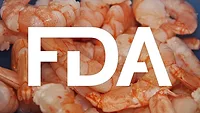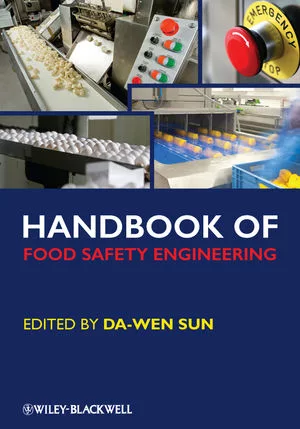Ten Steps to Ensure Conformity of Packaged Food

Conformity in packaged food upholds consumer safety, avoids costly product recalls and delivers tangible top- and bottomline business benefits. The Product Inspection Division of Mettler Toledo explains how packaged food manufacturers and brand owners can achieve conformity in 10 steps.
1. Comply with Regulations and Supplier Agreements
To trade in certain markets, packaged food manufacturers need to comply with three main types of laws: food safety, weight and labeling. These regulations are supported by best practice codes of conduct where, upon certification, manufacturers have access to trade with retailers in specific countries. Ultimately, the packaged food must have completed steps 2–8 below. Certain types of products—notably dairy and meat—have additional legal requirements. On top of this, some international retailers have proprietary supplier agreements detailing further requests, such as taking action on sustainability plans.
Tip: Understand the compliance requirements based on where and with whom who you want to trade, and your types of products.
2. Inspect for Contaminants
To safeguard the well-being and health of consumers, all packaged food must be free from unwanted contaminants. Metal detection or X-ray systems are the only inspection solutions that detect and remove contaminated packages from production lines at high throughputs.
Tip: Select the correct detection technology based on the potential types of contaminants, and the nature and format of the packaged products.
3. Check Integrity of Product
The packaged product can be compromised if the integrity of the seal or cap is not upheld. For example, if the closure is misaligned or dense product is trapped under the seal (or film), then this can lead to spillage, spoilage or risk of bacterial contamination.
Tip: Advanced vision inspection and X-ray technologies both perform a range of in-line integrity checks to ensure product quality.
Looking for quick answers on food safety topics?
Try Ask FSM, our new smart AI search tool.
Ask FSM →
4. Ensure Correct Weight
To comply with directives globally, such as the EC-Average Weight Legislation for prepackaged goods, the weight of each package must be within predefined tolerances. Checkweighing technology offers 100 percent inspection of the highest accuracy at production speeds and rejects products that fall outside the set parameters. Achieving target weights at the lowest possible predefined target reduces product give-away, which protects profits and brand reputation. Checkweighing can also be used to detect and reject packs with missing components, measure production line efficiency and identify areas for improvement.
Tip: Choose in-line checkweighers to ensure target weights with the utmost accuracy and reliability and to support overall equipment efficiency.
5. Check Integrity of Product Content
Safeguarding against missing components and checking that the correct amount of product is in one section or pack complies with food laws and is vital to uphold brand reputation. These quality tests are made possible by X-ray technology and vision inspection systems to verify that the composition of the package is accurate.
Tip: Advanced X-ray and vision systems perform multiple content presentation checks simultaneously in real time.
6. Inspect Label Position
Labeling errors include missing or incorrectly positioned labels. These nonconformity mistakes can result in product rework or even recalls and customer dissatisfaction. Vision technology inspects the positioning of all labels at fast speeds and removes all nonconforming products from the manufacturing line.
Tip: Validating label positioning helps to uphold brand integrity and protects bottomline profits by facilitating the reworking of nonconforming products.
7. Verify Label Content
Accurate label content is paramount for consumers to make informed decisions when purchasing a product and to avoid potential health risks caused by, for example, not mentioning included allergens. Incorrect labeling content can also result in noncompliance with labeling regulations, a breach of trading agreements and highly publicized product recalls. Innovative vision inspection technology verifies label content, including text, graphics and print type, according to preprogrammed details.
Tip: Use vision inspection to confirm labeling content conformity requirements, either alone or in combination with other product inspection technologies in one machine to improve operational efficiencies.
8. Monitor Inspection Activities in Real Time
All product inspection activities should be recorded in real time. In the event of a product recall packaged food manufacturers need this information to prove due diligence to authorities and to reliably trace products. On-going monitoring of quality assurance processes can also help to optimize operational efficiencies and productivity.
Tip: To safeguard your business, integrate data collection software to prove due diligence on conformity.
9. Ensure the Package is Perfectly Presented
Brand conformity involves upholding packaging presentation requirements from ensuring zero packaging imperfections—such as dents—to the correct use of branding.
Tip: Vision inspection and X-ray technologies ensure packages are presented in peak condition.
10. Check the Checkers
Repeatedly conforming packaged food instils confidence in consumers and helps build brand loyalty. It also enables compliance with regulations and supplier’s agreements. It is therefore essential that critical equipment like inspection systems is regularly maintained and calibrated to ensure continuing high levels of accuracy.
Tip: Consistency of conformity is key to retaining and growing market share, so a maintenance contract with the equipment manufacturer can be a wise investment.
To learn more about how to ensure conformity of packaged food, download Mettler Toledo’s free white paper, Ensuring Conformity of Packaged Food.







